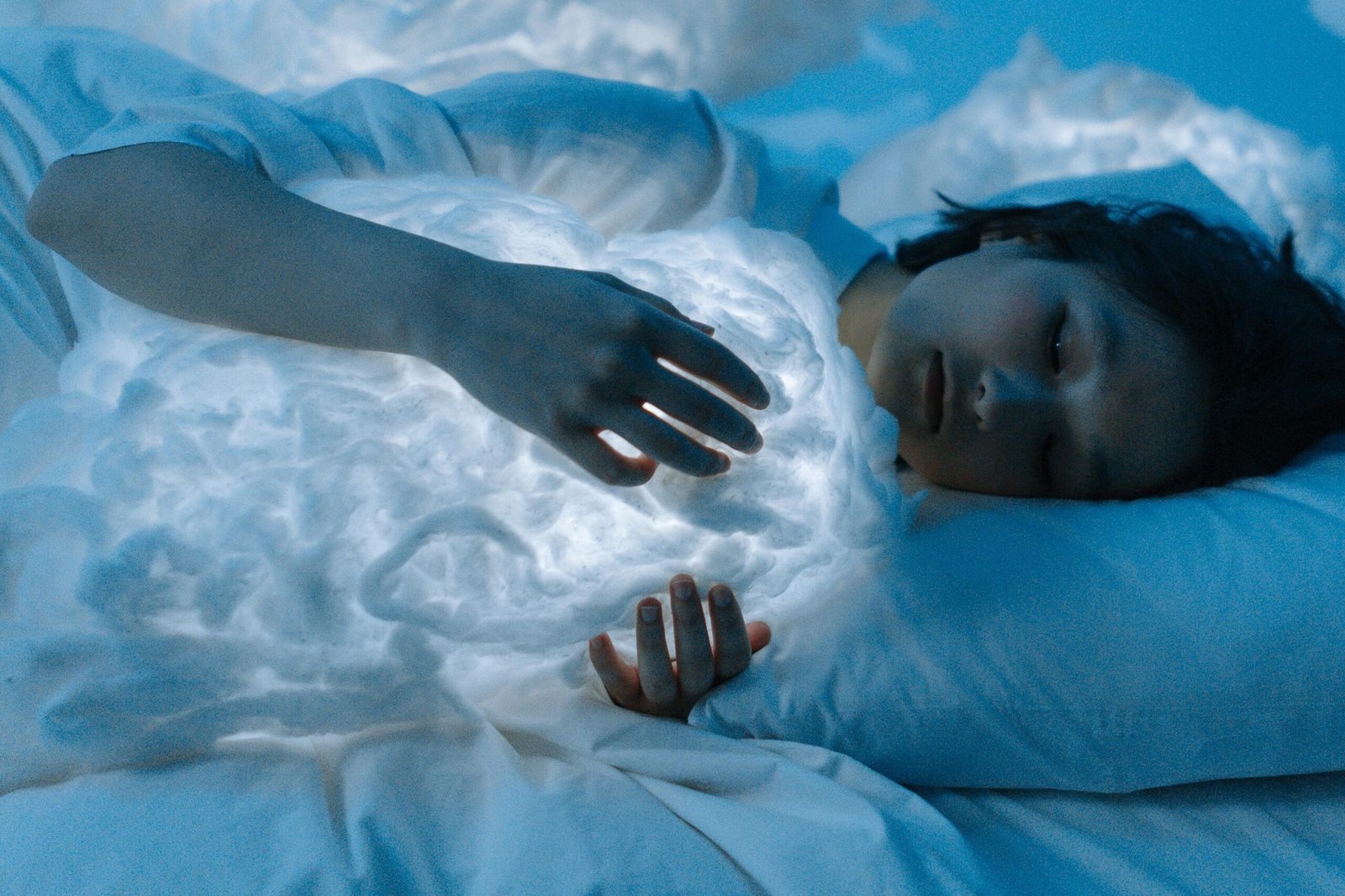The Human Mind is a Dream Machine

Every night, our brains take us on a journey beyond logic, weaving together surreal landscapes, impossible events, and emotional rollercoasters. Dreams can be as mundane as reliving a regular day at work or as bizarre as speaking with a long-lost ancestor in a floating city. Scientists have always been fascinated by these nighttime adventures, but only recently have they been able to peer directly into the dream world.
With advanced neuroimaging techniques, researchers have recorded real-time dream activity, revealing that our brains create scenes stranger than we could ever consciously imagine. These recordings show that dreams are not just random thoughts but intricate stories filled with emotions, symbols, and deep connections to our waking life. As scientists decode these dream signals, they are uncovering clues about memory, consciousness, and even the nature of creativity.
Dreams Are More Vivid Than We Remember
Have you ever woken up feeling like you just experienced a movie inside your head, only for the details to slip away within seconds? Neuroscientists now have proof that dreams are far more vivid and complex than we can recall. Brain scans show that during REM sleep—the stage most associated with dreaming—activity in the visual cortex and emotional centers of the brain is almost as high as when we’re awake.
This means our dreams are often bursting with colors, sensations, and intricate details, even if we forget them upon waking. The brain simply does not prioritize dream memory the way it does waking experiences, causing most of our nighttime stories to fade before we can fully grasp them. But with new brain-recording technology, researchers are capturing these forgotten moments, revealing just how strange and immersive our dreams truly are.
Our Dreams Are Full of Hidden Faces
One of the strangest discoveries from dream recordings is how frequently unknown faces appear. Even though we spend our waking lives surrounded by familiar people, our dreams seem to be populated by strangers—individuals we have never consciously met. Neuroscientists believe that these faces may be pulled from forgotten glimpses in daily life, like someone passing by in a crowd or a character seen briefly in a movie.
What’s even more mysterious is that these unfamiliar faces often feel significant within the dream, as if they play an important role in our subconscious. Some researchers think this phenomenon could be linked to how the brain processes memory and identity, blending fragments of different experiences into new, dreamlike figures. By studying these mysterious faces, scientists hope to learn more about how we construct reality, both awake and asleep.
The Language of Dreams is Universal
Despite cultural and personal differences, neuroscientists have found that the themes and patterns of human dreams are strikingly similar across the world. Whether in Tokyo, New York, or a remote village, people experience common dream scenarios—being chased, falling, flying, or encountering mysterious beings. This suggests that dreaming may be deeply tied to fundamental aspects of human cognition, rather than just personal experiences.
These universal dream themes could be linked to the way the brain organizes emotions and memories. The sensation of falling, for example, may be a primal response rooted in survival instincts. Dreams of being chased may stem from ancient fears of predators. By decoding these common dream patterns, scientists are beginning to understand the shared subconscious language that connects all of humanity.
Time Works Differently in Dreams
One of the most mind-bending discoveries from dream recordings is how the brain distorts time during sleep. While a dream may feel like it spans hours, days, or even years, it actually unfolds in just a few minutes. Neuroscientists studying dream activity found that the brain compresses and expands dream time, allowing complex narratives to play out in the blink of an eye.
This strange time-warping effect may be why dreams often feel like fast-moving, disjointed stories. The brain pieces together different memories and emotions without the usual constraints of linear time. Some researchers believe that this distortion of time in dreams is linked to creativity, allowing the mind to make rapid, unconventional connections that would be impossible in the waking world.
Emotions in Dreams Are More Intense
Scientists studying dream activity have found that the emotional intensity of dreams can sometimes surpass real-life experiences. The brain’s amygdala, which processes emotions, becomes highly active during REM sleep, explaining why dreams can evoke powerful feelings of fear, joy, sadness, or love. Even dreams that seem nonsensical can leave us feeling deeply moved or shaken for hours after waking.
This heightened emotional state may be why some dreams feel more real than reality itself. The brain amplifies emotions while suppressing logical reasoning, creating dream scenarios that feel deeply meaningful, even if they don’t make sense upon reflection. Researchers believe this could be the brain’s way of processing unresolved emotions, offering a psychological release that we may not be able to achieve while awake.
Lucid Dreaming Gives Us a Glimpse into Conscious Control

One of the most exciting findings in dream research is that some people can become fully aware that they are dreaming and even control their dreams. This phenomenon, known as lucid dreaming, occurs when parts of the brain responsible for self-awareness and logical thinking remain active during sleep. Researchers studying dream recordings have found that lucid dreamers can consciously manipulate their dream environments, interact with dream characters, and even perform experiments within their dreams.
What makes lucid dreaming so fascinating is that it blurs the line between waking and dreaming consciousness. Scientists believe that by studying lucid dreamers, they can gain insights into how consciousness itself works. If we can train ourselves to be aware while dreaming, it might also be possible to harness this ability to solve problems, overcome fears, and explore the depths of the subconscious mind in ways never thought possible.
The Brain Treats Dream Pain as Real Pain
One of the strangest discoveries from dream recordings is that the brain responds to pain in dreams almost as if it were real. Researchers have observed that when people dream of being injured, their brain’s pain-processing regions light up just like they would in waking life. This suggests that the mind does not entirely distinguish between imagined and actual pain while we sleep.
What’s even more intriguing is that some people report waking up with lingering sensations of pain from their dreams, even though there was no physical cause. Scientists think this could mean that the brain stores dream pain in the same way it does real pain, reinforcing the idea that dreams are not just random images but full-bodied experiences that impact the nervous system. Understanding this phenomenon could lead to breakthroughs in pain management and even help explain conditions like phantom limb pain.
Nightmares May Be the Brain’s Way of Rehearsing Danger
Dream recordings have revealed that nightmares are not just bad dreams; they may serve an important function in our survival. The brain seems to use nightmares as a form of threat simulation, preparing us for real-world dangers. In these dreams, people experience situations that trigger fear—being chased, trapped, or attacked—allowing the brain to practice its responses in a safe environment.
This theory suggests that nightmares are not just random occurrences but a built-in mental exercise to help us develop survival instincts. Interestingly, studies have shown that people who frequently experience nightmares may actually be more prepared to handle stress in real life. Scientists are now looking into whether controlling nightmares through techniques like lucid dreaming could help people manage anxiety and PTSD.
Dreams Can Strengthen Memory and Problem-Solving Skills
It turns out that dreams are not just for entertainment—they play a critical role in helping the brain organize and process information. Dream recordings have shown that during sleep, the brain replays and rearranges memories, helping to strengthen important connections while discarding unnecessary details. This process is especially crucial for learning and problem-solving, as the brain tests out different scenarios and connections without the constraints of waking logic.
Some of history’s greatest discoveries, from scientific breakthroughs to artistic masterpieces, have reportedly been inspired by dreams. Neuroscientists believe that this is because the dreaming brain makes unique connections between ideas, often leading to creative solutions that would be harder to reach when awake. This suggests that dreaming is not just a byproduct of sleep but an essential function for cognitive growth and innovation.
Animals May Dream Just Like Humans
If you’ve ever watched a dog twitch its paws or a cat let out a sleepy chirp, you might have wondered whether animals dream. Dream recordings have confirmed that many animals experience REM sleep, the stage most associated with dreaming. Brain scans of sleeping rats, for example, show patterns of activity identical to those observed when they were running through mazes while awake, suggesting they may be “replaying” their experiences in dream form.
This finding raises fascinating questions about consciousness in non-human species. If animals dream, does that mean they have imaginations, fears, and desires similar to our own? Some researchers believe that dreaming might be a universal feature of intelligent life, helping all creatures process their experiences, reinforce learning, and prepare for future challenges.
Some Dreams Can Predict the Future—Or So It Seems
One of the most mysterious aspects of dreaming is how some people report experiencing events in dreams before they happen in real life. While this may sound like pure superstition, neuroscientists believe there may be a logical explanation. The brain constantly absorbs and processes information, often making subconscious predictions based on patterns it detects. When a person dreams about something that later happens, it could be because their brain picked up on subtle clues that their conscious mind overlooked.
This phenomenon, known as precognitive dreaming, has fascinated scientists and psychologists alike. While there is no concrete evidence that dreams can foresee the future in a supernatural sense, they may serve as a deep processing system that helps the brain anticipate likely outcomes. Understanding this aspect of dreaming could provide valuable insights into how intuition and subconscious reasoning work.
Technology May Soon Let Us “Watch” Our Dreams on a Screen

Perhaps the most mind-blowing breakthrough in dream research is the possibility of recording and playing back dreams as if they were movies. Neuroscientists have already developed AI-driven brain imaging techniques that can reconstruct dream images based on neural activity. While still in its early stages, this technology is bringing us closer to a future where we might be able to visually replay and analyze our dreams after waking.
If perfected, this could revolutionize fields like psychology, neuroscience, and even entertainment. Imagine being able to share your dreams with others, revisit old dreams like memories, or even turn your wildest subconscious adventures into real visual content. But with this advancement comes ethical concerns—what happens if our private dreams are no longer just personal experiences but something that can be recorded, stored, or even hacked? As exciting as it sounds, the future of dream technology brings both incredible possibilities and new challenges for human privacy and consciousness.
